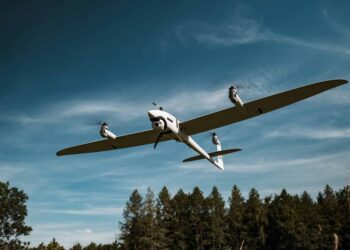Air traffic in Sweden and Europe is currently paralyzed due to a volcanic eruption in Iceland. How could a local event in the furthest reaches of Northern Europe paralyze an entire continent?
The reason is that the ash that fills the air following a volcanic eruption has a much denser content than a normal dust or ash cloud. The ash affects air-traffic safety in a number of ways. The ash comprises minerals, which are extremely small and hard rock particles. They are so hard that they can have a blasting effect on the aircraft’s cockpit windowpanes when an aircraft meets an ash could at high speeds. However, the most serious aspect of encountering an ash cloud from a volcanic eruption is neither the aforementioned nor visibility problems. The hard ash entails severe wear on all engine components; blades and blisks are worn down very rapidly. The ash contains sulfur, which leads to rapid chemical erosion and in turn to risks of fractures and blade damage.
Just as serious is the fact that the ash promptly enters a number of spaces in the engine and subsequently melts in the combustion chamber due to the heat. This soon causes build-ups in the turbine, which grow and inhibit the performance of the engine. In the worst case, it shuts down entirely. In addition to causing corrosion and build-up, cooling vents in the engine can also be blocked by the ash, which in turn causes the temperature in the turbine to rise sharply, thus melting the turbine blades.
The ash could also contaminate the oil and seep into the air-conditioning system, as well as the cooling system for the technical systems in the aircraft. As if this were not enough, the ash could also contaminate the avionics systems and electrical systems, and impact the hydrological systems and smoke detectors in such areas as the storage compartment.
Is there no way of preventing the ash from entering the aircraft and the engines?
No, a great deal of work has gone into reducing the risk of foreign objects entering the engines, but when, as in this case, it is a matter of particles that are this small, it is impossible. Fortunately, our part of the world is not affected by volcanic eruptions so often.









